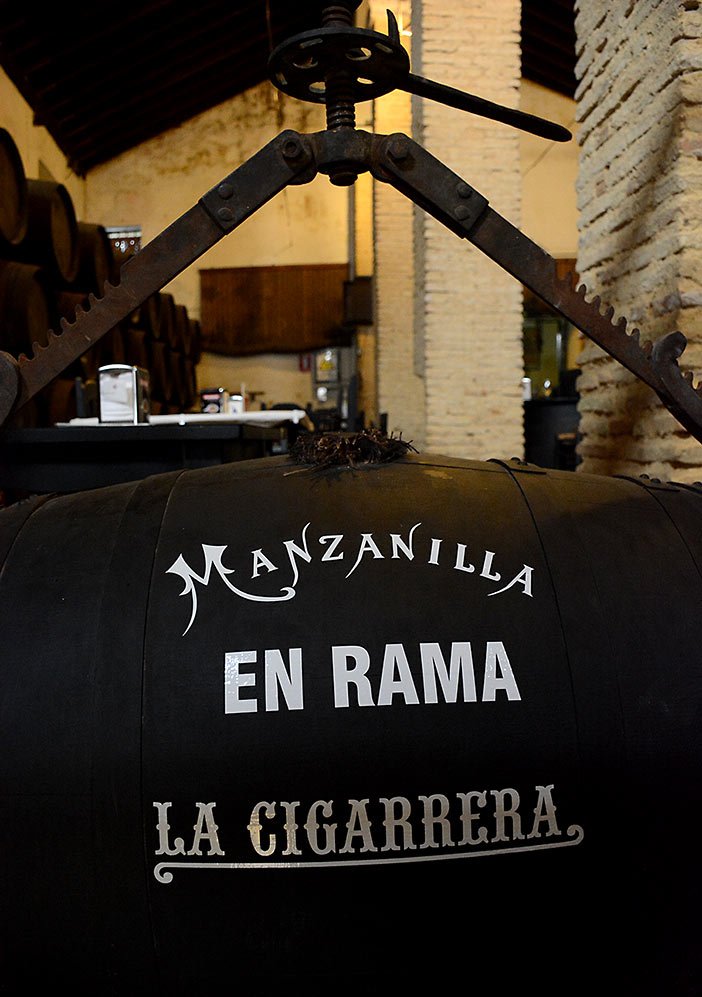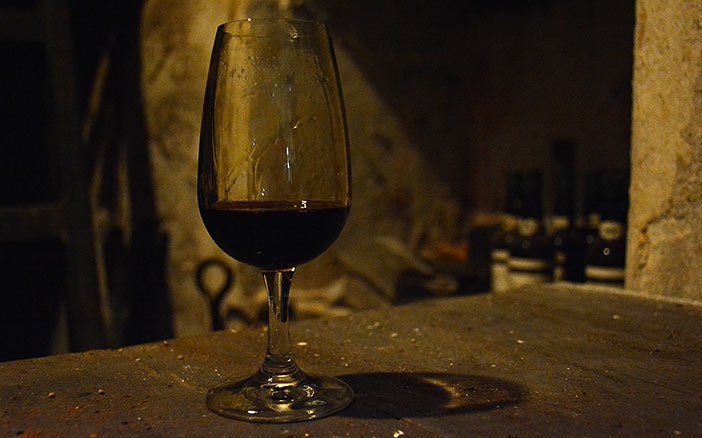On the Sherry trail article series introduces the noble and historic wine Sherry, and the three cities where it is produced – not forgetting tasting or buying tips. Join us on a journey into the rich world of sherry.
Article 3/3
Sanlúcar de Barrameda
The northernmost city in the Sherry Triangle guards the Guadalquivir River’s descent into the Atlantic. At one time, Sanlúcar de Barrameda was an important customs town through which merchant ships passing through to Seville had to arrive.
Today, the charmingly crumbling city of some 65 000 inhabitants thrives on Sherry, tourism and Flamenco. Its miles of sandy beach are a popular destination for sunbathers in summer and it also hosts Spain’s oldest horse races every August. The town is also famous among foodies for its tapas culture and the festival around it in May; the ‘Feria de la tapa’.
Manzanilla comes only from Sanlúcar
Sanlúcar de Barrameda’s own type of sherry, Manzanilla, is a fino-style wine, i.e. dry, aged under Flor. However, due to its proximity to the river and the Atlantic, Sanlúcar has a more humid climate than other sherry towns, so the yeast deposit that forms in the barrel becomes thicker and protects Manzanilla from oxidation better than in Jerez Fino.

Manzanillas are actually quite fresh wines with sharp acidity. They are rich in aromas; in Spanish, Manzanilla means Chamomile. These wines are characterized by a subtle saltiness, which is said to come from the Atlantic winds. This saltiness makes Manzanilla an excellent accompaniment to seafood, for example.
Varieties of Manzanilla
There is no question of a subtle difference in taste to the fino, but the D.O. Manzanilla – Sanlúcar de Barrameda has its own origin mark, detached in 1964 from the D.O. Jerez-Xérès-Sherry.
If sherry as a whole is like an onion that keeps revealing new layers as it is peeled, Manzanilla itself is already rather convoluted with its different variations.
Manzanilla = a fino sherry aged for at least 2.5 years in Sanlúcar
Manzanilla Pasada = a sherry aged for an average of 7 years, which is starting to lose its flor, but not yet enough to become Manzanilla Amontillada.
Manzanilla Amontillada = is similar to Manzanilla Pasada, but some barrels are aged up to 12 years and the flor disappears, giving the wines the oxidized characteristics of Amontillado.
Manzanilla Olorosa = is a strong Manzanilla aged for a very long time. 30 years in barrel goes by the wayside.
Jerez Cortado = to confuse the terms as much as possible, Palo Cortado made from Manzanilla is called Jerez Cortado, the name of another Sherry town altogether…
Mother Manzanilla in brown
La Gitana
Central color. Subtle lemon and apple on the nose. Yeast and delicate flowers. Quite fruity on the palate. Spicy. Soft flax on the finish. Long. Oaky. Salty.
San Leon
Gold colour. Intense. Apple-aromatic. A hint of paint. Smoothly balanced. Wise. Elegant. Aniseed glow. Oak at the end.
Michaela
Deep golden colour. Flowers and spices on the nose. Wasabi fresh. Apple peel. Firm mouthfeel. Powerful. Acidic too. Long. Some spice. Salty. Wise. Fine and interesting on Manzanilla.
Blackberries
Deep gold colour. Ripe citrus and paint. Honey. Neutral taste. Dry as a bone. Navetta. A bit of gunpowder. Spices. Quite hard.
Solear
Very light colour. Light chamomile. Lemon and yeast. Gunpowder. Neutral taste. Very dry. Slightly acidic. Quite hard too.

Surprisingly, there is a lot of variation in this side of the sherry. The colours vary a lot, as do the flavours from interesting to rather harsh and flat. Of these bottles, the one I wasted the most was Michaela. Very interesting aromas and enjoyable as is. San Leon, on the other hand, was by far the most elegant Manzanilla.
La Cigarrera in its original location
The old town of Sanlúcar de Barrameda is a motorist’s nightmare. In the labyrinth of one-way streets, even a stamp can no longer fit between the mirrors and the wall. But in 1758, when Don Joseph Colóm Darbó set up his sherry cellar, these streets and alleys were still good enough for horse-drawn carts. The La Cigarrera sherry house has remained in the family, now in its ninth generation, and as the succession has progressed, the ownership base has spread very widely within the family.


Nowadays La Cigarrera, which enjoys a cult sherry house reputation, produces 70% manzanilla and 30% other types of sherry. The cellar swears by traditional production methods at every stage and La Cigarrera could be called the artisan producer of sherry. The size of the production is reflected in the fact that they have “only” a few hundred 600 litre toneles in their cellar. The house’s sherries are widely available throughout Sanlúcar – and of course from their own bodega restaurant.
La Cigarrera sells a large portion of its Manzanilla to restaurants “En Rama”, or unfiltered straight from the barrel. Biologically matured Fino and Manzanilla sherries normally undergo a rigorous filtering and clarification process, which inevitably results in the loss of something essential along the way (compare raw milk to market milk). Rama is therefore manzanilla as it was enjoyed 150 years ago.

In the days when the church also collected taxes, the sherry houses paid for theirs in wine, of course, which was very popular with the priests. In order to keep the business in the best possible hands, the church had a small bodega called Sacristía in the back of each house, where they matured some very special sherry for the priests to enjoy.

Times changed, but the Sacristías remained, in a way, museums in use, with very old sherries in their bowels. I had the pleasure and great honour of tasting La Cigarrera’s unique delicacies straight from the cask; an amontillado of around 70 years old and a Pedro Ximenez of close to 100 years old!
www.bodegaslacigarrera.com
Delgado Zuleta and the pain of moving sherry bodega
Sanlúcar de Barrameda’s oldest surviving sherry house, the Delgado Zuleta, founded in 1744, has stood a kilometre south of the old town since 2004.
Delgado Zuleta’s export manager, Pelayo Garcia Vergara, explained step by step how the sherry bodega will be transformed. After all, it’s not as simple as calling in the loan boxes and a truck. In the case of Delgado Zuleta, in the late 1980s, a production space in the old town became impossible and it was necessary to change the map.

The moving process started in 1988 when they found a plot of land that had all the right characteristics, i.e. enough lime in the soil and an optimal slope angle. This is because rainwater needs to flow under the basements and soak into the limestone to provide the right humid conditions for mould to form. In other words, building a house the exact opposite of what the renovation trip taught us.
We also wanted the new space to be as far from the sea and as high above sea level as the old one, so that the winds and temperature would remain unchanged. From here we gradually began to raise the walls and move the old barrels inside. The biologists went around measuring to make sure that the same mould population was definitely moving and staying in the new premises. We moved slowly and quickly.

The move took a whopping 16 years. Barrel by barrel. Of course it would be a disaster for the sherry cellar if the mold were to change or at worst; die altogether.
In 2004 the job was done, and although all the meters were showing green and the walls of the new cellar were already nicely blackened by mould, it was not quite clear how the market would react. As if by magic, in the same year, Delgado Zuleta’s Manzanilla ‘La Goya’ was chosen to host the royal wedding of Don Felipe and Dona Letizia and this was the final blessing for the cellar master – the move was a success!
 Delgado Zuleta wine tasting
Delgado Zuleta wine tasting
La Goya manzanilla pasada
Apple, lemon, yeast, a little gunpowder. Very fresh, long, balanced. Slightly spicy finish. Elegant.
Zuleta amontillado
Fresh, nutty, fruity. Fine aroma. Fruity, but crumbly taste. Turns to nuts. Broad, long. Neutral. Pretty easy amontillado.
Monteagudo amontillado
An interestingly liqueur-like fruit flavour. Dried apricots. Balanced. Long. Dry and elegant. Very good. (apparently just left Alko…)
Quo Vadis amontillado
VORS or Very Old Rare Sherry. Parker 97 points. The concentrated aroma is elegantly restrained. Dry fruit, vanilla seeds. Very intense fruit. Balanced. Even still a little acidic. Long, elegant, gorgeous!
Monteagudo Pedro Ximenez
Sweet figs, dried fruit. Round and sweet. Very fruity, long and balanced.
www.delgadozuleta.com
Other articles on the Sherry Trail
Text and photos: Janne Suomi
Last Updated on February 21, 2023 by Flavorado
This post is also available in:
Suomi

